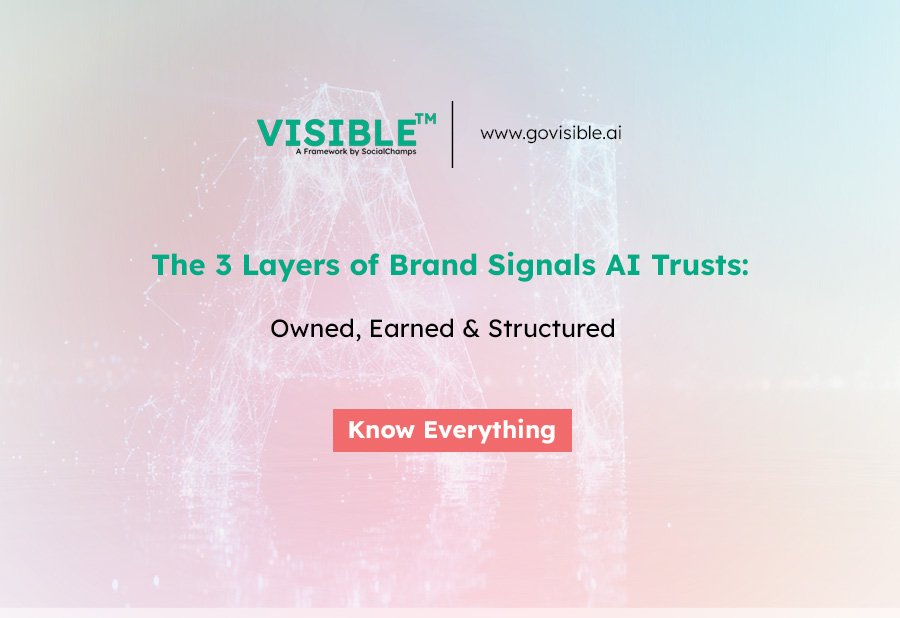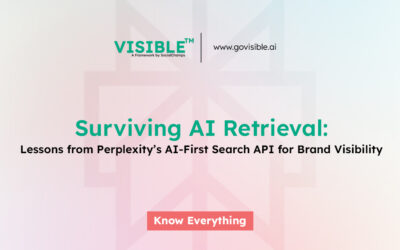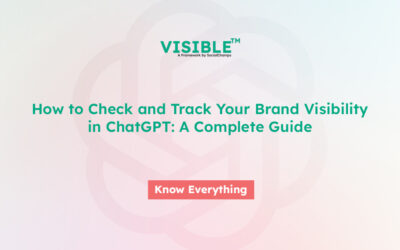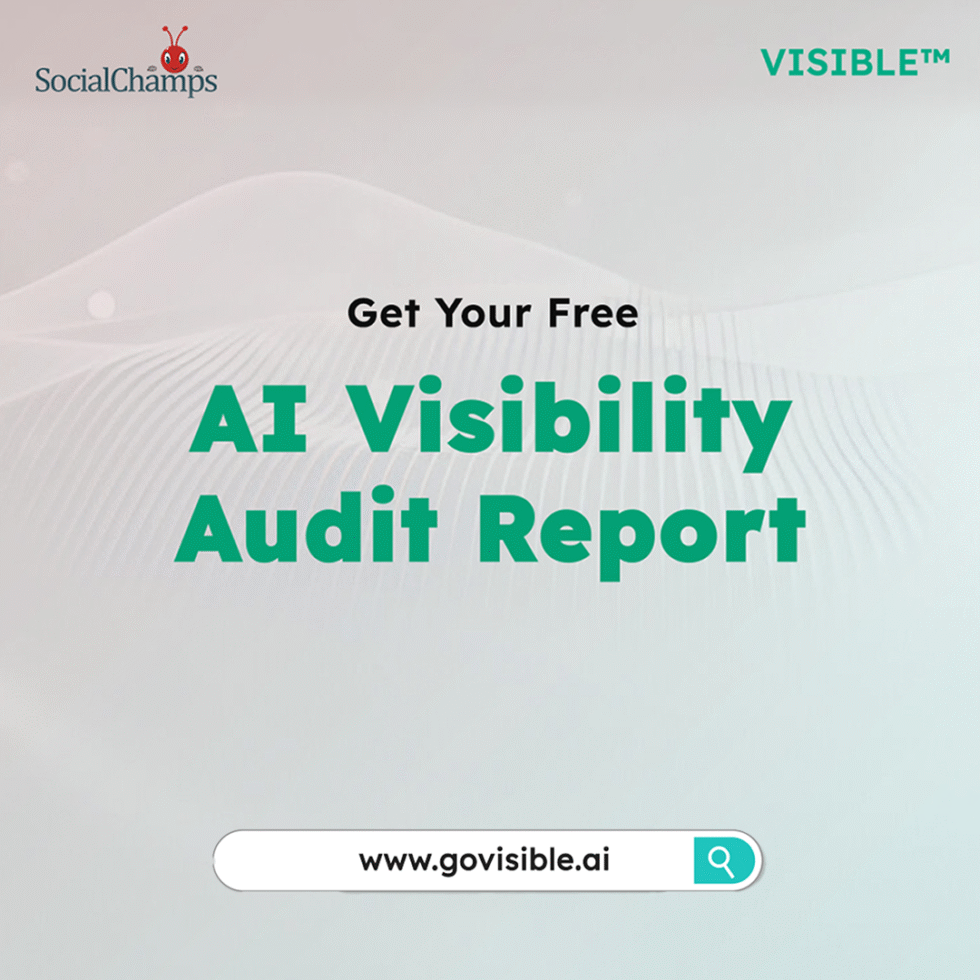What Are Brand Signals & Why Do They Matter
At VISIBLE™, we define brand signals as the digital fingerprints that AI systems use to decide if your brand is trustworthy, authoritative, and relevant enough to appear in search results or generative answers.
AI systems today don’t “read” content like humans—they parse entity patterns, citations, link references, and structured data. That’s why understanding your brand signal ecosystem is critical for any company serious about visibility.
VISIBLE™ Viewpoint:
AI models like Google’s Gemini or OpenAI’s ChatGPT rely on multidimensional brand signals to determine authority—content alone isn’t enough.
For deeper context, explore Brand Signals & Citation Ecosystem.
How AI Defines Trustworthiness
AI systems use what we call Cross-Signal Validation—a process where multiple classes of brand signals (owned, earned, structured) are evaluated collectively to determine brand authority and trustworthiness.
Simply put, if AI sees your brand consistently referenced across these three signal categories, you’re far more likely to surface as a trusted source.
According to Google’s documentation on E-E-A-T (Experience, Expertise, Authoritativeness, and Trustworthiness), external corroboration and structured data play critical roles in trust assessment (source).
Layer 1 – Owned Brand Signals
Owned Brand Signals: These are digital assets 100% controlled by your organization. They’re the foundation of your authority footprint.
Key Assets (website, content, social profiles)
- Your domain authority (Moz, Ahrefs, etc.)
- On-site content relevance and depth
- Official social profiles (LinkedIn, Twitter/X, Instagram)
- Meta descriptions, title tags, and internal link structures
Example: Adobe’s owned signals include adobe.com, their Creative Cloud blogs, and their verified YouTube channel.
VISIBLE™ Tips for Optimization
- Audit your Entity Depth Index using the VISIBLE™ Platform: Ensure your brand topics are fully covered.
- Use Prompt Bank insights inside the VISIBLE™ Platform to publish content that answers AI-queried user intents.
- Keep structured metadata (Open Graph, Twitter Cards) up to date.
VISIBLE™ Platform Module:
Our Brand Signal Explorer module within the VISIBLE™ Platform lets you track and optimize owned asset performance across your domain and social ecosystem.
Layer 2 – Earned Brand Signals
Earned Brand Signals: These are third-party endorsements and references where external sources talk about your brand. You don’t control them—but you can influence them.
Mentions, Citations, Backlinks
- Media mentions (Forbes, TechCrunch)
- Backlinks from authoritative domains
- Influencer references
- Unlinked brand mentions tracked via tools like Mention or Brandwatch
Example: Shopify’s SEO strength comes heavily from earned signals—think TechCrunch articles, partner blogs, and digital PR wins.
Measuring Citation Velocity
Citation Velocity is the rate at which your brand earns new external mentions or backlinks over time. High Citation Velocity signals rising authority and relevance to AI models.
Brands with sustained increases in monthly citation velocity saw a 27% lift in organic visibility within six months (Source: SEMrush study).
VISIBLE™ Platform Module:
Our Citation Heartbeat dashboard—part of the VISIBLE™ Platform—tracks Citation Velocity across earned and structured layers in near real time.
Layer 3 – Structured Brand Signals
Structured Brand Signals: These are machine-readable data points that help AI categorize and authenticate your brand in knowledge graphs and search indexes.
Schema Markup, Knowledge Graph Presence
- Organization schema
- Product schema
- LocalBusiness schema
- Wikipedia presence
- Google Knowledge Panel inclusion
Example: Salesforce benefits from deep structured signals—organization schema on Salesforce.com, plus a robust Wikipedia profile and Knowledge Graph presence.
Tactics to Strengthen Structured Signals
- Implement advanced schema markup using tools like Schema.org
- Claim and optimize Google Business Profiles
- Ensure consistent NAP (Name, Address, Phone) data across directories
VISIBLE™ Tip: Use the Schema Health Check module in the VISIBLE™ Platform to identify missing or broken structured signals that could block AI visibility.
For more tactics, refer to our cluster post on How AI Interprets Schema Markup.
Brands That Built Authority Across All Three
Nike:
- Owned: Nike.com, SNKRS App
- Earned: Coverage on Hypebeast, Complex, ESPN
- Structured: Knowledge Graph presence, detailed product schema
HubSpot:
- Owned: Hubspot.com, blog.hubspot.com
- Earned: Frequent citations in marketing research studies
- Structured: Organization schema, Knowledge Panel
VISIBLE™ Viewpoint:
Brands that integrate all three layers consistently outperform in AI-generated answer surfacing.
How the VISIBLE™ Platform Elevates Each Layer of Brand Signals
- Owned Layer: Use the Entity Depth Index and Prompt Bank modules inside the VISIBLE™ Platform to fill topical coverage gaps.
- Earned Layer: Monitor Citation Velocity with the Citation Heartbeat dashboard in the VISIBLE™ Platform.
- Structured Layer: Run audits via the Schema Health Check and Brand Signal Explorer, both inside the VISIBLE™ Platform, to close structured data gaps.
Next Steps to Start Optimizing Your Brand Signal Ecosystem
If you want your brand to appear in AI-driven answers and ranked search snippets, your brand signal ecosystem needs proactive management across all three layers.
Download the VISIBLE™ Brand Signal Audit Template
Request a VISIBLE™ Demo to see how the VISIBLE™ Platform surfaces missing signals holding back your visibility.






